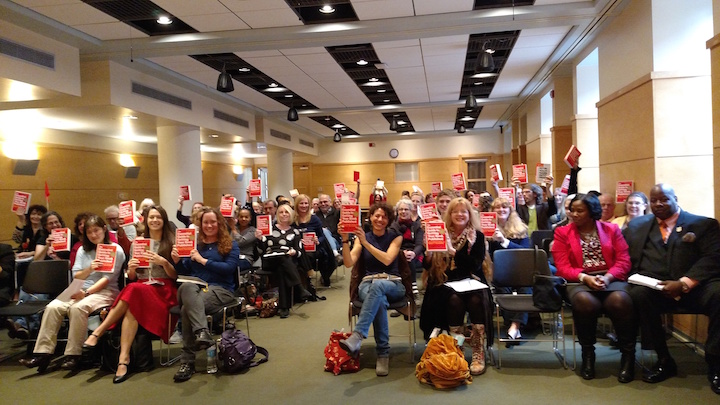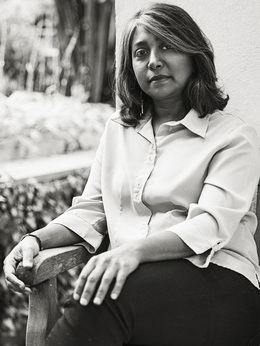We first met Josh Funk at the New England SCBWI Conference. (If you’re not a member of this group and you’re interested in books for kids, as soon as you’re done reading this piece and sharing it with everyone you know, go join that group. If you haven’t been to one of their conferences, ditto.) We were struck with Josh’s fabulous combination of goofiness and seriousness. It’s something we aspire to at The Book Doctors. And when we found out his debut picture book was going to be dropping, we had a wonderful wave of serious goofiness come over us. It’s called Lady Pancake & Sir French Toast, and it’s a ripping barnburner full of outlandish action, heroic and dastardly characters, roller coaster rhymes and some absolutely fabulous illustrations by Brendan Kearney. So we thought we’d sit down with Señor Funk and see what’s new on Funk Island.
To read this interview on the Huffington Post, click here.


The Book Doctors: First of all, congratulations. What did it feel like when you saw that first box of books arrive and you tore it open and there it was, your own baby book?
Josh Funk: Ahh, the Back to the Future moment: “If you put your mind to it, you can accomplish anything.”
Well, I didn’t exactly have the ‘open the box moment’ that you see in the movies (or at least that one movie). The first physical copy of Lady Pancake & Sir French Toast that I got a copy of was the one the Sterling sales rep gave to Porter Square Books (in Cambridge, MA). I got a tweet from a friendly bookseller at PSB who said she found my book, so I immediately rushed to Cambridge.
The first thing I noticed was the amazing design. I knew it was going to have an embossed cover with foil, but it was really stunning. The book creaked a little when I opened it. I had seen a digital copy, but the clarity of the images on the pages was overwhelming compared to seeing it on the screen. And I think it smelled a little bit like maple syrup.
And then I jumped around giddily for about ten minutes before the booksellers asked me to leave out of fear I was scaring away all of their customers.
TBD: Why in the name of all that’s good and holy would you choose to get into the publishing business? Have you had your head examined recently? Been checked for brain parasites?
JF: Haven’t had my head examined lately. It’s possible I’m housing parasites. But the real reason is that I always read a lot of books to my kids. One day I thought, ‘I can do this.’
But once I joined my first critique group, then attended my first Society of Children’s Book Writers and Illustrators conference, I realized I had a lot to learn. But I also noticed that the kidlit community is so warm and welcoming and just plain fun. I quit my fantasy football leagues and started taking writing more seriously.
I’d like to think that even if I never sold a book, I’d still be happy just to be a part of the kidlit world.
TBD: How did you go about getting a book contract not only for Lady Pancake, but also for your next two books which are coming out?
JF: In the May of 2013, I gave up on trying to acquire a literary agent. I was getting almost no responses to my queries. Out of 35 queries for Lady Pancake, 1 agent responded with a rejection implying she read it (or at least read the title). The other 34 were made up of 10 form rejections and 24 black holes. I felt I was better than that, so I submitted Lady Pancake to 10 publishers via snail mail.
Around the same time, there was an open submission period to Scholastic via author/illustrator Debbie Ridpath Ohi’s Inkygirl blog. The Scholastic editor was looking for material suited for ages 0-5, and the only manuscript I had written for that age group was Pirasaurs! (most of my picture books are geared toward kids ages 4-8).
And then as late summer rolled around, I finished revising another manuscript (Dear Dragon) and decided to send it out to publishers that accepted submissions via email and online form.
By early November, Scholastic told me they were taking Pirasaurs! to acquisitions, Dear Dragon had garnered interest from two small publishers, and Sterling made an offer for Lady Pancake & Sir French Toast. All of that, plus a personal recommendation from a friend helped me obtain representation with an (awesome) agent. Over the next two months, my agent finalized the deals with Sterling and Scholastic and found a home for Dear Dragon at Penguin/Viking.
And that’s how I got an agent and sold three picture book manuscripts between November of 2013 and January of 2014. I know it’s a non-traditional path, but I feel extremely fortunate with the way it worked out.
TBD: Hasn’t anyone told you that rhyming books don’t sell? How did you overcome this ridiculous idea, and why do you think people keep saying that?
JF: Oh, boy. I have thought about this a LOT. Many rhyming picture books get published every year. So why do people say not to write in rhyme? Why is there this stigma? Well, there’s a single simple reason.
It’s very easy to write bad rhyme.
And lots of people do (please note that if you’re reading this and you like to write rhyming picture books, I’m not talking about you).
Everyone grew up reading and loving Dr. Seuss. Therefore, many people think that picture books are supposed to rhyme. When they start writing picture books, that’s how they write them. This includes me.
It’s a flawed way of thinking. Not everyone is cut out to write rhyming picture books. It’s actually rather difficult. I personally believe that a good rhyming picture book has an added level of charm. But there are so many mistakes you can make when writing a rhyming picture book (mostly to do with rhythm, all of which I’ve discussed in depth on my website and while leading workshops).
But here’s the problem. When a literary agent receives a query for a rhyming picture book manuscript, there’s a 99% chance that it’s bad rhyme. And it’s not worth the agent’s time to read 99 bad rhyming manuscripts, just to get to the one good one. And I completely understand and agree with that policy. Add to that the fact that it’ll be nearly as hard for an agent to sell a rhyming manuscript to an editor. I truly believe that this is why my query response rate was so utterly abysmal (in retrospect, I shouldn’t have said that the manuscript rhymed in the query).
I overcame this hurdle by first worked very hard to improve my rhyming, spending lots of time reverse-engineering critique partners’ comments.
Second, I bypassed agents. An agent is (rightfully) concerned with a writer’s entire body of work and career. If you submit a single rhyming manuscript embedded in an email query and that’s all they have to go on, it doesn’t make you a particularly enticing prospective client. But an editor is more concerned with a single manuscript. It’s not that they don’t care about you or your career, but if they like a manuscript, rhyming or not, that’s all they have to commit to.
I figured I’d have better odds of someone actually reading my manuscript at a publishing house. And at least in this case, I was correct.
TBD: What are some of your favorite things about being a professional author? What are some of the most horrifying things about being a professional author?
JF: I love getting to meet fun people. Like other awesome authors I admire. And super cool teachers and librarians like those in the Nerdy Book Club. Seeing my son’s face the first time someone asked me for an autograph (part confusion, part amazement, part pride) – that was pretty cool. I also get to travel a little more than I used to.
Horrifying? I guess a Misery-type situation would be horrifying. Other than that, I’m all peaches and roses.
TBD: We are big lovers of pancakes and French toast around here. I, myself, leaned toward the pancake. Olive, our eight-year-old, often leans toward the French toast. I think you can divide all of humanity into these two categories. How did you come up with this fantastic idea for a book?
JF: One Saturday morning, I asked my kids what they wanted for breakfast. One said, “Pancakes.” The other said, “French toast.” “Pancakes.” “French toast.” “Pancakes!” “French toast!”
While the arguing continued, I checked the kitchen, and as you might have expected, all we had were waffles. To top it off (literally and figuratively), we had enough maple syrup left to fill a single square on a waffle grid.
It was on the way to the diner that I came up with the idea.
TBD: What was it like working with your editor? Illustrator? Agent?
JF: Zaneta Jung (my editor at Sterling) is terrific. We had one phone conversation discussing her revision notes, went back and forth for a week over email finalizing the manuscript, and that was pretty much it. Zaneta (pronounced ‘zuh-net-ta’) has so much energy and excitement for kids’ books. She has a great eye for picking out illustrators, too. She definitely had a hand in finding Brendan Kearney.
Like many author/illustrator relationships, Brendan and I didn’t really talk much (or at all). Rumor has it that the publishers like it this way. Author talks to editor editor talks to art director art director talks to illustrator. This way, the publisher maintains complete control of the message (good or bad). I’ve had nothing but good things to say about Brendan’s work on Lady Pancake, which I think have been relayed to him. I’ve had a handful of quick conversations with Brendan over Google chat, but that’s about it.
My agent, Kathleen Rushall, is a rock star! I was extremely fortunate to sign with her while she was actively building her picture book list. She represents picture books through young adult at Marsal Lyon Literary Agency and is strong in every aspect you’d want from an agent. She has a fabulous editorial eye, she has a good sense of what particular editors are looking for, she knows the business and contracts side, she’s extremely communicative, and she’s a genuine pleasure to work with. We, her clients, affectionately refer to ourselves at #TeamKrush. We even have a logo designed by author Jessie Devine for PitchWars.

TBD: What do you see is the value of going to a writer’s conference? And specifically how has being a member of SCBWI helped you in your career and as a person?
JF: I think going to a writer’s conference is valuable at many levels of your career. If you’re brand new to the writing world, you’ll be able to learn the basics. It’s important to learn not only the craft of writing, but also about the industry and its expectations (e.g. picture book manuscripts should be around 300-500 words).
Once you’ve learned the basics, you might meet people who will ultimately become your critique partners (this has happened to me).
Perhaps you’ll read a picture book manuscript at an event’s open mic session, which will validate that you’re on the right track (also happened to me).
Maybe you’ll have a good time, make some friends, and get to watch the one-of-a-kind #Pitchapalooza led by The Book Doctors (again, happened to me).
Conferences avail the opportunity to connect with agents and editors for critiques or casual conversations (networking is so important).
SCBWI kickstarted everything for my writing life. In 2012, I attended my first New England SCBWI Regional Conference as one of about 700 attendees. And in 2016, I’ll be co-coordinating the conference alongside Heather Kelly, writer and founder of The Writers’ Loft (planning is already heavily underway for next spring’s event).
In 2016, we’re trying something new. We thought it might be nice to hear from (and get face time with) leading educators and booksellers. We’re bringing in a panel tentatively called “The Voice of Reading” with Elizabeth Bluemle (author, bookseller, blogger at PW’s Shelftalker), Donalyn Miller (teacher, author of The Book Whisperer and Reading in the Wild, Nerdy Book Club co-founder), Susannah Richards (professor, expert in all things children’s literature), and John Schumacher (AKA Mr. Schu, school librarian, newly appointed Ambassador of School Libraries for Scholastic Book Fairs).
SCBWI has helped me so much in such a short period, I’m grateful for the opportunity to volunteer my time to plan the 2016 (and 2017) NE Regional Conferences.
TBD: I hate to ask you this, but what advice do you have for writers?
JF: Keep writing. When you finish a manuscript, write the next one. It’ll be even better than the last. Networking is half the battle. I’ve written a 12-Step Guide to Writing Picture Books available (for free) on my website here.
TBD: And finally, how do you keep it so funky?
JF: I eat lots of candy corn. I wear Old Spice deodorant. And I’m 17% psychic.
Josh Funk is the author of Lady Pancake & Sir French Toast (Sterling), available now. Josh is also the author of the forthcoming picture books Dear Dragon(Viking/Penguin 2016), Pirasaus! (Scholastic 2017), and more. Josh spends his days as a software engineer writing Java code and Python scripts, and his nights and weekend drinking Java coffee and writing picture book manuscripts, alongside his wife, children, and assorted pets and monsters. Josh is a board member of The Writers’ Loft in Sherborn, MA, and the co-coordinator of the 2016 and 2017 New England Regional SCBWI Conferences. Find out more about Josh, his books, his schedule for public appearances, and more at www.joshfunkbooks.com and on Twitter at @joshfunkbooks.
Arielle Eckstut and David Henry Sterry are co-founders of The Book Doctors, a company that has helped countless authors get their books published. They are also co-authors of The Essential Guide to Getting Your Book Published: How To Write It, Sell It, and Market It… Successfully (Workman, June 2015). They are also book editors, and between them they have authored 25 books, and appeared on National Public Radio, the London Times, and the front cover of the Sunday New York Times Book Review.
Join our newsletter to receive more interviews and tips on how to get published.
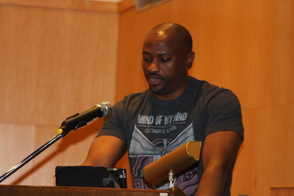


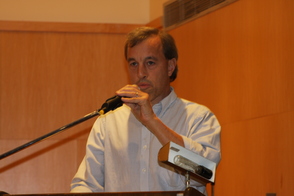
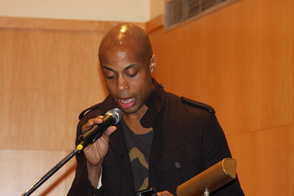


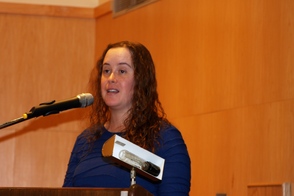
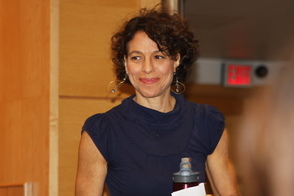
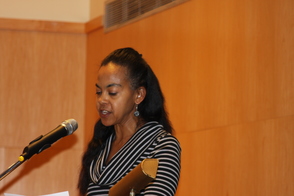
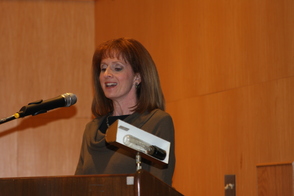

 On the panel were: David Henry Sterry, author of 16 books, activist, previously an actor, and currently cofounder of The Book Doctors; Arielle Eckstut, author of nine books, agent at large, cofounder of the brand LittleMissmatched, and cofounder of The Book Doctors; Joelle Delbourgo, local literary agent, previously Editor-in-Chief at HarperCollins; and Ylonda Caviness, author, journalist and education advocate.
On the panel were: David Henry Sterry, author of 16 books, activist, previously an actor, and currently cofounder of The Book Doctors; Arielle Eckstut, author of nine books, agent at large, cofounder of the brand LittleMissmatched, and cofounder of The Book Doctors; Joelle Delbourgo, local literary agent, previously Editor-in-Chief at HarperCollins; and Ylonda Caviness, author, journalist and education advocate.
